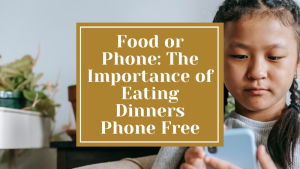
1. Respect Each Other
As with all conflicts in life, the key is to respect each other. A lot of vegan activists recommend an “evangelical” approach to these situations: preach and convert. But this isn’t always the best approach in a living situation. Everyone likes to have their opinions respected, including the meat eaters that you’ll be dealing with.
2. Keep Separate Tools
If the people you cohabitate with aren’t vegans, it may be wise to have at least some separate tools. Not only will it keep your cutting board and knives vegan and completely meat-free, but it’ll also help reduce the risk of cross-contamination and the spread of foodborne illnesses common in such situations.
3. Introduce Food Segregation
Label specific areas of your fridge and pantry for “vegan only” foods. It will help prevent unwanted food contaminations that may occur because of leaky packaging and other issues. Use the upper shelf in the fridge for your vegan choices.
4. Use Color Code
If you live with inconsistent labelers, you may consider getting Tupperware just for your things. Get containers in one color for your vegan choices. Use a different color or colors for general options. For example, it can be green for vegans and red for non-vegans. This way you’ll know that anything in the green containers is safe for you to eat.
5. Use Humor to Defuse Tension
Using humor to solve conflicts is an extremely effective way of dealing with tough situations. Making a joke about something gives people an opportunity to correct the situation without feeling as though they’re being bossed or harped at. Using humor and being calm about it will help widen the channels of communication and prevent more issues in the future.
6. Plan Meals Together
Most of the housework is usually done in a home by one person. This means that not just the cleaning but also the cooking and meal planning will fall largely on one person’s shoulders.
When you add dietary restrictions to the mix, having to plan two meals for everyone can become an extremely heavy burden. This is why the entire family or household needs to participate in meal planning if the family has more than one eating style.
7. Take Turns on Date Night
When you go out to eat on dates, make sure to keep a balance. Put your foot down if you have to and insist that every other time you go to a vegan-friendly restaurant. Your omnivore can find something they like to eat just as easily as you can pick and choose your sides in a steakhouse.
8. Go for Variety in Sides
One of the easiest ways to maintain a balance in a family setting is to make a variety of vegan-friendly sides. Vegan sides can help make sure that non-vegans are getting all the vitamins and minerals they need, and will help cut down on conflict during meal prep and planning.
9. Pick Vegan Dinners Omnivores Will Love
Shopping for two different meals for 7 to 21 meals a week is going to get expensive fast. Introducing more vegan meals that your non-vegans will tolerate eating will cut down on kitchen chaos and your grocery budget. Organic vegetables are cheaper than organic beef after all.
10. Be Supportive of the Family Vegan
If you’re not the vegan of your house, be supportive of them. Make sure they’re getting the right kinds of foods and getting enough of them. If you notice they’re not getting enough variety, suggest adding a few different vegan foods. If your vegan is a teenager, let them prepare their own meals, or even prepare a few meals for the family to try together.


